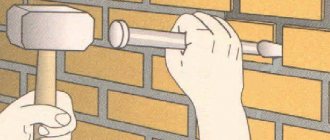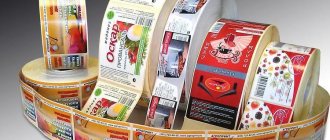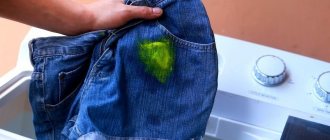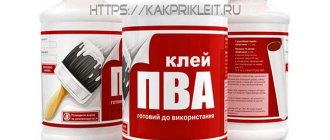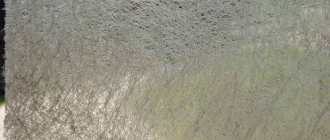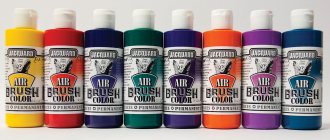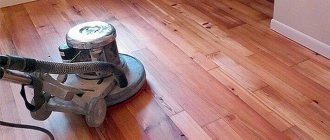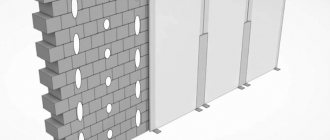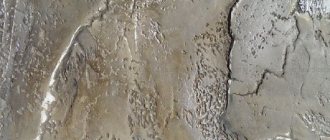How to remove superglue
There are four main groups of methods by which you can remove the adhesive composition.
The greatest effect can be achieved if a set of measures is applied. Mechanical techniques
This category includes manipulations that use force: scraping, rubbing, knocking, grinding.
The main disadvantage of such measures is the high probability of damaging the base and rendering the item unusable. If they are used to remove film from your skin, there is a risk of injury. Therefore, you need to be careful and try not to overdo it.
Impact of temperature
Although cyanoacrylate is able to withstand temperature changes, systematic increased exposure to heat or frost gradually destroys its structure. This can be used to remove stains using an iron, hair dryer or freezer. Typically these techniques are used to clean fabric.
Professional products
Manufacturers took care of consumers and developed a special product called “Anti-glue”. It quickly and effectively dissolves contaminants, but it cannot be applied to some materials: varnished and painted, as well as certain types of plastic.
Due to its high toxicity, children's clothes should not be treated with such a mixture. For the same reason, direct contact with skin should be avoided and gloves should be used.
Instructions are included with each product and must be strictly followed. Otherwise, there is a risk that the composition will not work or will damage the surface.
Chemical compositions
This includes any type of solvent: acetone and liquids containing it, “White spirit”, “Thinner 646”, “Dimexide”, gasoline, alcohol.
All these substances destroy cyanoacrylate, making the contamination easily removed. However, it is worth considering that they themselves are very aggressive, and therefore can harm the object being processed and ruin its appearance.
Traditional methods
They come to the rescue if nothing more effective is at hand. They act more slowly, but are safe and will not cause harm to health. Here is a list of popular folk recipes.
- Oil is vegetable oil or melted butter, even motor oil will do. The principle of operation is that it softens the film around the edges, making it easy to pick up and remove. It is suitable for non-absorbent materials. Oil can also remove glue from stickers.
- Vaseline, baby cream - they work in the same way as oil and allow you to remove a layer of glue.
- Hot soapy water - cyanoacrylate loses its properties upon prolonged contact with hot liquid, and soap enhances the effect. This is true for fresh contaminants. True, this process is slow and time-consuming.
- Vinegar – removes stains from delicate fabrics and has virtually no effect on their appearance.
- Lemon juice does not act quickly, but is acceptable for use on surfaces where other cleaners are prohibited, for example, on leather or faux leather products.
- Salt or baking soda - These can be used as mild abrasives to remove the adhesive layer from leather or smooth surfaces. To do this, you just need to prepare a paste from water, the selected powder and smear it on the mark.
- Hydrogen peroxide – used to clean metal and leather products.
Useful tips
- The tube is not pointed towards yourself so that the substance does not accidentally get on the skin and face.
- The composition contains toxic substances, so work is carried out in well-ventilated areas.
- If not all the glue has been used, you should not roll up the tube: there is a chance that it will crack at the bend and the substance will spill out.
- You should always keep the tube of glue so you can read its composition. This will make it clear what is the best way to remove it from which surfaces.
- If super glue gets into places that are difficult to reach, for example, in a lock, then vinegar essence will help. Using a syringe, you need to pour it inside the lock, wait a little and clean it with a needle or toothpick. Anti-glue or another solvent will also help to deal with such contaminants.
During the cleansing process, certain rules should be followed. This will not only effectively remove the stain, but also prevent damage to the material on which the glue has dripped. Helpful tips include:
- It is necessary to test the aggressiveness of the cleaning agent. First it needs to be applied to a small area.
- Products with active chemical composition should be used in a ventilated area. It is advisable to use gloves and a mask that protects the respiratory system.
- Initially, it is necessary to use less aggressive substances. If they do not give the desired effect, you can resort to highly effective means.
- It is prohibited to apply substances with potentially hazardous chemical compositions to surfaces in contact with food.
- Super glue Moment must be applied to the required area, in doses. Due to its adhesive properties, very little is needed.
Advice! In case of acetone poisoning, it is necessary to immediately provide access to oxygen and seek emergency medical help.
What chemicals will help clean
Traces of super glue should be wiped off before they have time to dry. Chemicals that help with this procedure:
- Anti-glue. The composition has a thick consistency, suitable for working with vertical surfaces. Do not use on painted or varnished surfaces.
- Dimexide. It has a liquid texture and removes super glue from cars and household appliances. Irritates the skin of the hands; you need to wear gloves.
- White Spirit. Organic solvent, dissolves paints and varnish.
- Alcohol. Used for mechanical stain removal, softens the texture of dirt.
Chemical methods
Removing superglue this way means using a chemical such as Demixide (dimethyl sulfoxide). It is available in any pharmacy. This is a product that facilitates the penetration of medicinal substances into the deep layers of the skin. In addition, you can use it to remove glue stains from a computer monitor or mobile phone display.
Application of "Dimexide":
Apply the product using a cotton swab to the surface stained with superglue. Leave it for a while. Carefully remove the stain. Remove loose particles from the surface with a dry cloth.
This method of getting rid of superglue stains is very effective; the contamination is removed, while the surface remains undamaged. The disadvantage of Dimexide is that the product penetrates very quickly through the skin into the bloodstream, so it is necessary to work with it only with gloves.
White spirit or refined gasoline is toxic but is a very effective adhesive remover. One of the disadvantages is that the likelihood of surface damage is quite high and it is necessary to work with these substances only in a ventilated area or in the open air.
Use of white spirit and purified gasoline:
- Before use, check how the material being cleaned reacts to the substance.
- From the edges to the center, wipe off the dried glue with a cloth or cotton swab dipped in white spirit (gasoline).
- Wash the treated area with soapy water (in the case of cleaning the monitor, take a cotton pad or swab soaked in the solution).
Nail polish remover or acetone should be used in a well-ventilated area to remove dried Super Glue from natural fabrics and hard surfaces.
Application of acetone:
- Before using the product, be sure to test its effect on an inconspicuous area of the surface or material.
- If acetone does not change the structure, color and other characteristics of the material, then proceed to treat the area stained with the adhesive.
- Rub the dried glue stain in a circular motion, from the edges to the center.
- After this, wash the treated area with soapy water.
Using acetone, gasoline or solvent, the superglue stain is wiped off the plastic. Although this is a rather capricious material, treatment with chemicals often causes deformation or discoloration of the surface.
Superglue that has not completely dried from plastic will be easier to remove. Spray the stained area liberally with universal glass cleaner and wipe with a dry cloth. If you are unable to remove the stain the first time, repeat the procedure several times.
How to remove superglue quickly and effectively
Hard, smooth surfaces are better at removing small adhesive stains. They can be quickly cut off with a knife if they have just been dropped onto a wooden table surface. Secondary glue can irreparably damage the varnish coating. In rare cases, it is possible to completely get rid of all traces of contamination.
But how to remove glue that is firmly ingrained into a soft structure? This is already more problematic, it’s not worth peeling off, although you can try to soften it a little with water, then remove it with another means. Sometimes the same method works as for removing chewing gum - place it in the freezer and then remove the stain whose structure has changed due to the low temperature.
For example, you can warm it up with a hot jet of a hairdryer if it is shoes. Next, apply a damp cloth with a stain remover or soap solution for a while. Then try to mechanically scrub it off the rubber sole of the sneaker or wash it off the fabric.
How to dissolve dried super glue
In cases where the glue stains were left long enough and had time to dry out, ordinary solvents such as water, soapy water or alcohol will be ineffective. In such situations, experts recommend using special compounds.
One of the most common among them is dimexide. This is a dimethyl sulfoxide based solvent that has a primary effect on cyanoacrylate. Consequently, the risk of damage to the stained surface is minimized. You can buy dimexide at any pharmacy at an affordable price.
Other products that can dissolve super glue include:
- acetone and its derivatives;
- anti-adhesive containing propylene carbonate or nitromethane;
- petrol;
- acetone-containing nail polish removers.
Before using anti-glue, you must read the instructions for use.
You can watch the video on how to dissolve dried super glue.
How can you dissolve super glue from metal?
When gluing iron parts, you often have to deal with the problem of dissolving super glue from the metal. Treatment with acetone or solvent will be quite difficult. The problem is that these substances tend to evaporate quickly, without having time to react with the damaged area and achieve the desired result.
When the question arises of how to dilute the glue, it is necessary to take into account its composition and properties. When interacting with water or soap solution, it quickly thickens, and when the moisture evaporates, it begins to dry out instantly. Therefore, it is impossible to dilute it with these substances. In this case, some use technical acetone or gasoline.
To completely eliminate contamination, it is recommended to generously moisten a rag with solvent or acetone, apply it to the damaged area and wrap it with tape so as to prevent the access of oxygen. Within an hour, a thermal reaction occurs under the tape: the glue heats up and begins to soften. After time has passed, the so-called “compress” is removed, and the remaining adhesive is removed mechanically using a knife, blade or other sharp object.
If minor scratches or stains remain on the metal, they are carefully rubbed with sandpaper.
Moment super glue contains components that provide special bond strength. Therefore, without the help of specialists, it can be difficult to figure out how to dissolve the glue.
You can do this yourself, at home. To remove “Moment” or “Second” super glue from a metal object, in addition to acetone or solvent, also use:
- vinegar essence;
- ethanol;
- White Spirit;
- nitromethane
It is best to try to remove severely dried stains mechanically. This way you can get instant results.
How to dissolve Secunda glue? A glass cleaner containing ethanol can be used as an effective and fast-acting solution. It is applied to the stained area, left for a few minutes, after which the surface is wiped with a dry, rough cloth. If necessary, the procedure is repeated several times until the traces completely disappear.
Why does glue stick so quickly?
The use of simple fastening compounds saved many useful items from disposal. But how can you wipe off super glue after carelessly squeezing it out of the tube or getting it “in the wrong place”? This is a question that many have asked themselves.
Any glue is a two-component structure that works when interacting with the missing reagent. Usually this:
- liquid (water or solvent);
- gaseous substance (air or oxygen).
During crystallization, heat is released, which confirms the immediate reaction. This sticky mass quickly crystallizes, penetrating into micropores and cracks in the surface. An irreversible process is taking place, which is why it is so difficult to get rid of an accidental stain that can ruin everything.
The active substance is enclosed in a capsule with a narrow spout - the familiar packaging of super glue. Its contents are a fast-drying cyanoacrylate that is activated upon contact with air when it is squeezed onto the surfaces to be bonded.
Cyanoacrylate is also included in other adhesive compositions:
- "Moment";
- "Second";
- "Super Moment"
Superglue was invented in the USA back in the mid-twentieth century, when numerous experiments were carried out in the military industry. It became most widespread after the Chinese began to mass produce it and sell it with untranslatable instructions to many countries.
Unfortunately, no one has yet suggested a special cleaner or a suitable home remedy to quickly neutralize it.
The most accessible solvents
The most universal natural remedy, which can be used to remove dried traces of carpentry, plant, stationery and polyvinyl acetate compounds, is water. To clean the surface, simply blot the fresh residue quickly and rinse with water until the sticky residue disappears. Unfortunately, if the stain is old and firmly ingrained, then it is not possible to remove it using such a solvent.
Another popular remedy that can be used to dissolve glue has proven itself to be sunflower and baby oils. Each of them needs to grease the dried residue several times and wait a while. It will gradually lose its adhesive properties, and the solvent will mix with it, since many types of adhesive mixtures are oil-based. Upon completion of the procedure, the remaining marks are easily erased, and the surface is rinsed with water. Vaseline has a similar property; its high fat content promotes the rapid breakdown of molecules.
Among natural solvents, ordinary vinegar can be distinguished. You should wipe the stained area with it and wait half an hour. During this time, the stain will begin to lose strength, dissolve in acid, and the residue will need to be wiped off.
A mixture of baking soda and water in a 2:1 ratio is very effective in this matter. This paste-like substance is applied to the contaminated area, wait until the clot is completely dissolved and rinse with water.
Alcohol is considered an effective solvent, capable of decomposing many adhesive compositions. When applying this drug to the stained area after 5-10 minutes. the strong clot will soften. Further, the residues are freely removed during the process of wet wiping.
Acetone has a similar effect, but should be used carefully when cleaning synthetic surfaces. Other known solvents are: gasoline, turpentine, white spirit, ammonia. When using them, for greater efficiency, the adhesive clot is preheated with a hairdryer
Thus, the process of its removal is accelerated
When using them, for greater efficiency, the adhesive clot is preheated with a hairdryer. Thus, the process of its removal is accelerated.
How to wash your hands from fuel oil
Modern people are surrounded by a wide variety of mechanical devices. Therefore, no one is immune from contamination by greasy lubricants. Men are especially often concerned about the issue of removing fuel oil from their skin, because they are most often associated with the maintenance of equipment. But women and children can also get dirty with fuel oil. To get rid of it, you will need special or improvised means. It can be:
- specialized cleaning products for washing heavily soiled hands
- dishwashing detergents;
- chemicals for dry hand cleaning;
- White Spirit;
- washing powder;
- butter;
- margarine;
- eucalyptus oil;
- laundry soap;
- ammonia;
- petrol;
- car shampoo;
- soda;
- coffee grounds;
- berries;
- clay.
Depending on possibilities or personal convictions, it is permissible to use both chemical and traditional methods to remove fuel oil. The choice determines the intensity of contamination and the characteristics of the victim’s body.
Chemical methods
Chemicals are most often used to remove fuel oil. The drugs are reliable and effective. Contamination is quickly removed with effective chemical reagents. There are several options for using household chemicals.
According to the first method, to remove fuel oil, use washing powder or dishwashing detergent:
A little substance is applied to the skin and the dirt is gently rubbed. Residues are washed off with warm water.
After using the drug, it is recommended to lubricate cleansed skin with a nourishing cream to protect the dermis from drying out and irritation.
Using the following method, you can use special preparations to clean heavily soiled hands. You can buy a lot of cleaning products in stores to remove complex stains. Buying such a drug is within the capabilities of anyone.
The most popular were weakly acidic cleaners. They contain a high content of abrasives. An example of such products is the paste-like suspension SOLOPOL:
- Apply the substance to dry hands.
- In the contaminated area, the suspension is thoroughly ground.
- Add a little water and grind again.
- Residues and dirt are washed off with warm water.
- Hands are dried and lubricated with a nourishing, better regenerating, cream.
To clean your car from fuel oil contaminants, service stations sell special shampoos. Simply wash your hands with it to get rid of traces of dirt. The most effective products are Doctor Wax, Karcher, Sonax.
White spirit and other solvents are aggressive substances. But you can get into the top ten. In addition to white spirit, it is permissible to use gasoline, diesel fuel, and even motor oil. All substances act directly on the structure of the dirt.
The most delicate of all such products is motor oil. It cleans almost any dirt and is used without water. The composition has a disinfecting effect, which is especially good for damaged skin.
Folk remedies
Folk remedies will help if specialized ones are not at hand. There is a time-tested solution. It is prepared from ammonia, soda, starch and turpentine:
- In a small container, mix a couple of large spoons of baking soda and starch.
- Add to them a small spoonful of turpentine and ammonia.
- The components are mixed until smooth.
- The paste mixture is applied to your hands and left to dry completely.
- Wash off the substance and dirt with warm water and laundry soap.
Oils and clay are used in the same way as in the case of foam removal. Clay or coffee grounds will help remove fuel oil.
A natural abrasive is applied to the skin, rubbed gently but thoroughly and the dirt is washed off under heated water.
In rural areas, berries, especially elderberries, will be a salvation. They rub their hands with them, as if soaping them. Green gooseberries and red currants are suitable. Clean the leaves of rhubarb and sorrel.
A transparent film of laundry soap is no less effective. Lather your hands and wait for the product to dry completely. This must be done before work. Cleaning your skin will be much easier.
Why is Moment glue dangerous?
The adhesive contains components that are water-resistant; simply removing it with water will not work. You need to remove Moment glue from the skin as soon as possible.
A small amount of superglue should be immediately cleaned with water and your fingers should be soaked in a soapy solution, then the remaining glue should be removed using a hard sponge. Repeat the steps until the super remedy disappears completely. This procedure will take a little more than ten minutes.
Do not use gasoline or kerosene. These substances remove stains from the adhesive surfaces of furniture, fabrics, shoes, and leather goods. They not only negatively affect the respiratory tract, but also cause allergic reactions.
Human skin is renewed every month. When applied to areas of the body, the glue does not penetrate deeply into the epidermis. If it does not disappear completely, it will disappear in a few days with dying areas of the skin on its own. Glued fingers cannot be separated abruptly; this must be done gradually, with rotational movements.
Mechanical scraping
How to remove Moment glue from skin using abrasive devices:
- A pumice stone or a stiff brush scrubs off the product very well after a soap solution. It is enough to simply wipe off the dry glued areas of the skin, but the main thing is not to overdo it and not damage the surface of the epidermis. The result will not be the most satisfactory - some areas will remain uncleaned, but this natural method of exfoliation is the most gentle.
- Ladies nail file. Use it to carefully pick up and file away the skin. But using a file is fraught with injury, and the adhesive residue will still have to be removed by other means.
Special formulations
Construction and specialty stores sell chemicals for dissolving superglue. The composition is applied to the stain, left for the time specified in the instructions, then removed with warm water and soap.
Anti-glue is usually used to scrub the surfaces of furniture or clothing, but it is also safe for humans. Simply unscrew the tube, pierce the membrane and apply the gel to the surface of your hands. You need to wait 7 minutes, then use a fiber cloth and rinse off the chemicals in running warm water.
Folk remedies
Folk remedies are simple, and every housewife can find them:
- Salt - before the procedure, soak your hands in warm water. Then sprinkle a little salt on the skin and rub in for a few minutes. Clean the resulting white paste with running water. If necessary, repeat the procedure. You can use a saline solution by adding lemon juice to it. Add 2 tbsp to a warm bath. spoons of salt and soak your hands.
- Baking soda - put your hands in a saucer with warm water, then rub the soda into the glue, rinse with a warm stream under the tap.
- Alcohol or vodka - dip your hands in alcohol for about a minute until they take on a whitish appearance. The fingers slowly begin to come off, and the glue itself is removed from the skin like a crust.
- Vegetable, almond, butter or margarine - rubbed into the skin until the stains are completely wiped off. Natural ingredients are very suitable for sensitive skin, provided that the glue is absorbed shallowly.
How to remove glue using household products
Household kitchen dishwashing detergents are excellent for removing adhesive films. They must be dissolved in a ratio of 1:4 and wiped with a sponge or washcloth. This removal method will take 5–10 minutes. You can soak your hands in the solution and wait 20–25 minutes until the adhesive material is completely removed.
We recommend: DIY ceiling clothes dryer
Methods for removing glue at home
To remove glue, use the following means:
- Hand cream of any brand, including children's, is suitable for people with dry sensitive skin. It should be applied to the contaminated area, wait a while and begin to remove the glue. The cream softens the epidermis and the adhesive material itself, which makes it easy to remove.
- Vaseline is also an assistant in removing the remaining substance when rubbed into the skin.
- Women's cosmetic scrub can be used instead of salt.
- You can lubricate a cotton pad with Dimexide. It heats the fingers, dissolves the glue, the procedure should be carried out in the first minutes after the glue enters. The composition of Dimexide is an excellent anti-inflammatory agent.
Traditional methods
Chemical solvents should not be used on metal substrates as they may cause marbling marks. Mechanical removal of liquid nails is acceptable for silicate and organic glass. The method is suitable for cleaning laminate and glossy tiles
You need to work carefully. Treat each stain separately
- Pharmaceutical drug Dimexide. Dissolves adhesives within a few minutes.
- A small amount of margarine or butter (any home remedy with a high fat content).
- Vinegar (6-9%). The contaminated surface is wetted for 15-30 minutes. This option is only valid for hard surfaces. After half an hour, the glue itself should become softer and easier to carefully remove with a spatula.
- Soda. A kitchen sponge is moistened with warm water, then sprinkled generously with soda, and the surface is wiped until the glue completely disappears. Frozen areas can be moistened with soda and water, leaving for 20-25 minutes. Soda can be replaced with any kitchen cleaner.
- Pumice stone for feet. First, put a wet rag on the glue mark, and after a while try to wipe it off.
If a stain was noticed during work, it is removed immediately. When using solvents, first check its effect on a small, inconspicuous area of the surface.
Removing superglue from different surfaces
Superglue is a good helper for many small repairs. It can glue wood table top, plastic products, phone case and other materials. But it can also cause trouble if it gets on things that are not intended for gluing... The most unpleasant thing is if the glue gets on your hands or on your favorite clothes
When washing off the adhesive, take into account the properties of the material on which it is located
Skin cleansing
Superglue should not be removed by literally tearing the glue apart with your fingers. Apart from injury, this method will not give anything. For cleaning, you can use either chemical or home remedies.
Removing superglue from hands
The first way to remove second glue from the skin of your hands is a scrub. Everyone knows the effect of peeling on the skin. It removes dead cells on the surface, smoothes it, makes it elastic and healthy. Due to the content of small abrasive particles, the scrub will help in removing the substance from the hands. Take any scrub into your hand and rub it between your fingers. Then rinse.
The method of American housewives is to use peanut butter. It contains small pieces of peanuts that act like a scrub.
Rinse cleansed skin with water, soak and moisturize with cream.
Textile cleaning
Wash the fabric thoroughly in warm water, then rub gently. When removing traces of superglue, be careful not to damage the fabric. Try to remove as much glue as possible
If the fabric is thick (there is no risk of damage), try to carefully scrape off the stain. You can soak your fingers in oil - this will make it easier to remove sticky stains.
Removing superglue from clothes
For stubborn stains, use an effective solvent that cleans the fabric without damaging it.
For home use, acetone-containing nail polish remover is suitable.
If nothing sucks, don't expect a new item in your wardrobe that's sure to please you.
Cleaning suede
First, try to carefully scrape the glue off the suede with your fingernails. Do not damage the material. You can try soaking the stain with hot water (just the stain itself, not the surrounding area!), this will help soften the glue.
If all else fails, try solvent
When working with acetone, be careful to apply it on a hidden area first to ensure it does not discolor the suede.
Cleaning smooth hard surfaces (marble, glass, tiles)
Alcohol will remove superglue well from hard, smooth surfaces. It will help remove adhesive from glass, marble, tiles, and even from car panels (you can use acetone to remove adhesive from a car body). Rub alcohol into the stained area until the glue dissolves. Remove the remaining parts with a cloth soaked in detergent.
You can remove superglue from glass with a razor blade, finishing the process by wiping with soapy water and polishing.
Removing superglue from wooden surfaces
When cleaning superglue from furniture and other wood products, you can choose from the following options:
- Scraping with nails. If the adhesive layer is thin, this method may help.
- Acetone. This method is used to clean mainly varnished surfaces. Wipe the stain with a cloth soaked in acetone. After softening, remove the residue with a rubber scraper and wash with soapy water.
- Grinding. If the stain is large and the previous methods do not work, the only option is to use sandpaper. After sanding and washing the cleaned wood, polish it.
Cleaning laminate flooring
When removing adhesive stains from laminate flooring with cleaning products, it is important to look at the recommendations for use on this type of flooring. The most suitable means:
- Cif Cream. Ideal for cleaning superglue from PVC and laminate flooring.
- Debonder. Capable of removing the adhesive layer without damaging the surface.
- Mineral oil. Dip the fabric in oil, wipe the glue drops until their edges begin to rise slightly. Then wash off the oil with a cloth soaked in warm water and soap, and polish the surface.
Cleaning screens and monitors
The best way to clean a surface, phone display or laptop screen is Dimexide. Apply it with a cotton pad.
Cleaning lock cylinders and metal
Superglue dissolves isopropyl alcohol well.
Expert opinion Irina Kovtun
The mentioned Dimexide, White Spirit, and special cleaning agents (Anti-Glue, Debonder) will also help remove dried glue.
What you will need
Attention! To remove traces of glue, you need to use improvised means and solvents. Fresh stains can be easily wiped off with foam sponges soaked in warm water.
To wipe off glue stains, improvised materials are used, which depends on the place where the adhesive composition got in. But a person engaged in construction or repairs should always have on hand old fabrics, water, various scrapers, and tools to help remove dirt. You will have to remove old stains with cleaners.
Scraps from old fabrics
To quickly clean a dirty surface without harming its appearance, you need to prepare in advance unnecessary fabrics of different quality - cotton, corduroy, denim. You should also have a container of water nearby to wet the fabrics. It is recommended to wear gloves when using any adhesive composition.
Scraper, chisel or spatula
Use hard tools to mechanically remove old dirt, then wipe the stained area with a rag soaked in solvent. These tools are auxiliary when cleaning glue with wire and solvents; they help to carefully remove the remaining adhesive from the stained surface.
Thin metal wire or fishing line
A thin wire or thick fishing line will need a piece half a meter longer than the contaminated area. Use the end of the wire to pry up a dried piece of glue, carefully pierce it and move it to the middle of the segment. Then you need to hold the wire by the ends and move it back and forth until a particle of glue begins to move away from the surface. Then you need to lift it a little to slide the spatula under it.
If small drops still remain at the spot, remove them with a scraper and then wipe with a damp cloth soaked in solvent. When using a solvent to remove residual stains, you must act carefully so as not to spoil the fresh surface.
Warm water
The multicomponent mass of the adhesive composition is dissolved with warm water and acrylic solutions. Immediately upon completion of work, moisten a rag with them and wipe off glue stains
It is important that acrylic compounds do not contain acetone; this can be easily recognized by their smell. With aqueous composites, the adhesive is removed thanks to a complex chain of PVA with polyacrylics
Fresh traces of glue from plastic windows and window sills are wiped off only with warm water, without the use of acrylic compounds that destroy the structure of the plastic.
Mineral-based solvent or special remover
Aggressive solvents are suitable for cleaning old stains. It should be remembered that the lower surface suffers from the solvent and its texture changes.
Protective gloves and glasses
Manufacturers recommend working with safety glasses and protecting your hands with gloves. Adhesive materials and means for removing contamination from them, if they come into contact with the skin of the hands, cause local burns, and contact with the eyes is not allowed at all - this can seriously damage vision. In addition, you can get a general allergic reaction.
Construction hair dryer
Note! If glue stains have time to polymerize, it will be difficult to wipe them off. Rough tools leave scratches on any surface
Then a hair dryer comes to the rescue.
The old stain is first heated with a hairdryer, after which it easily dissolves in cleaning products. If the hairdryer also operates in the cooling mode, soft drops of glue can be cooled so that they harden and removed with a wire, a rag and warm water.
Suitable solvents
Since superglue polymerizes when exposed to moisture, standard solvents such as water, dichloroethane or alcohol will only make the situation worse. Therefore, to dissolve the “Moment” you need to use special means.
Compounds based on dimethyl sulfoxide have proven themselves to be the best in everyday life.
, in particular, "Dimexide", sold without a prescription in most pharmacies. As a solvent, it acts mainly on cyanoacrylates, which means it will not harm most materials used in everyday life.
Superglues, including Moment, dissolve very well with the help of acetone and its derivatives (for example, acetonitrile). However, acetone is toxic and has an extremely aggressive effect on plastics, fabrics, paper and wood. In addition to pure acetone, you can also use acetone-containing mixtures, for example, regular nail polish remover.
Currently, special adhesive removers based on propylene carbonate have been created
(the so-called anti-glue), for example, the Secunda brand. There are also special Moment anti-adhesives, as well as nitromethane-based solvents.
On the skin
In cases where the glue gets on the skin of the hands, it hardens quickly, since the surface of the skin is usually more moist than the surrounding environment. The most gentle way for the skin of your hands to remove the resulting polymer is to use ordinary table salt, which should be rubbed between your hands, after wetting them. Do not use soda under any circumstances, since a highly alkaline environment, on the contrary, promotes greater polymerization of cyanocrylates.
"Dimexide" is relatively safe, but requires long-term exposure, so it is not recommended to use it on the body. If salt does not help, you will have to use acetone-based solvents. The main thing is to wash your hands thoroughly after removing the glue, and subsequent application of a cream or lotion to the skin will be a good idea.
On clothes
Acetone and its compounds are absolutely not suitable for removing superglue stains from fabric. Clothes made from ordinary fabrics can be soaked for half an hour in Dimexide dissolved in water - most glue stains will then disappear. Anti-glue, especially nitromethane, is more suitable for delicate fabrics.
Another way to remove glue stains from fabric is to freeze it in the freezer for a few minutes and then brush it off. But it’s better not to clean synthetics this way.
Gasoline can be used to clean rough fabrics. You can try to remove old stains with regular vinegar, since an acidic environment promotes the monomerization of cyanoacrylates.
On plastic
Most solvents that act on adhesives that are polymer in nature also dissolve plastics that are polymer in nature. Therefore, the best way to remove Moment stains from plastic surfaces is to use Dimexide.
On glass
To remove glue stains from glass, you can dilute an all-purpose glass cleaner and apply it to the stain. You can also try using white spirit. The use of Dimexide can leave difficult-to-remove stains on the glass.
On the tree
If the wood has not yet been treated, then the easiest way is to remove the glue from it mechanically. If the surface is already prepared for use, then acetone or Dimexide are best suited for cleaning it.
On metal
To dissolve a glue stain on metal, you will have to moisten a regular cotton pad with Dimexide or acetone and attach it to the stain. After half an hour or an hour, the remaining glue is removed mechanically.
To learn how to remove glue from any surface, watch the following video.
An indispensable assistant that helps out in many situations, firmly gluing almost any materials, superglue often causes unexpected difficulties. If it gets on the skin or mucous membranes, it causes health problems, and if it remains on clothing or objects, the item becomes unusable.
To remove “Super Glue” and “Moment” glue, special cleaners with various compositions are available on sale. Available home remedies are also suitable and are also quite effective.
It is only important to consider what surfaces they can be used for.
How to get rid of super glue on leather products
When working with such an expensive material as genuine leather, it is advisable to know how to remove super glue from leather. If glue gets on the product, it must be wiped off immediately to reduce the contact time, while trying not to smear it. If it was not possible to remove it immediately and the glue had time to dry, there is no need to peel it off so as not to damage the delicate surface. You can use the products that are on hand or that are sold in the nearest store.
Folk remedies
Simply washing off such a highly adhesive agent as superglue will not work. Home remedies include salt or baking soda. Any of these products is mixed with water until a homogeneous paste is obtained and applied to the stain, gently rubbing. Remains can be simply removed with a damp piece of cloth.
The stain can also be wiped off with a cotton pad soaked in lemon juice or vinegar. Maximum care is required here so as not to damage the skin around the spot.
Chemicals
Acetone or products containing it will help remove glue stains. The simplest of them is nail polish remover. It should be noted that manufacturers are increasingly offering such products without acetone or with a low content of the substance, and this may affect the result. The solvent is applied to the glue stain, left for several minutes, and then washed off with soap and water.
A debonder with acetone, a product for removing artificial eyelashes from eyelids, can also cope with this task. An alternative option would be purified gasoline for refilling lighters.
Exposure to warm and cold temperatures
If the glue stain is large, the affected area can be placed under running hot water. You will have to hold it for at least five minutes - the glue should get wet. After this, the layer needs to be picked up by the edge and carefully peeled off. The obvious disadvantage of this method is that natural leather does not like water, but if it is treated with water-repellent impregnation, the damage will be minimal.
Temperature changes have a destructive effect on most superglues. The stain needs to be heated with a hairdryer, and then put the product in the freezer for two hours - under the influence of low temperature the stain will begin to crack. After this, you can try to peel off the stain. This method is not suitable for rubber-based glue.
Solvents
Heavy solvents are almost guaranteed to damage the top layer of dyed leather, and it will have to be further processed and restored. It is better not to cleanse the skin with such potent products.
Of the available options, the pharmaceutical product Dimexide is suitable - a drug that has solvent properties. It must be applied to the damaged area and left for a few minutes: the liquid will slowly but surely dissolve the stain. This is not the fastest method, since the solvent is gentle. You may need to repeat the procedure two or more times.
Special means
Glue manufacturers also often have in their product line products for its removal - the so-called anti-glue (Moment, Henkel). Special active additives will clean the surface without damaging it.
We recommend: Shoe deodorant - how to use it correctly
Most manufacturers recommend testing its effect on a small area of the product before using anti-glue: there are cases when paint or varnish is removed along with the glue.
Anticlean
Acetone
Soak a cotton pad or rag in a small amount of liquid intended for removing varnish. Apply the soaked cotton wool to the glue and wait a few minutes. The glue will dissolve over time. Subsequently, use a stiff sponge to scrub off the softened glue. Repeat the steps until the glue is completely removed.
Acetone removes the bonding elements created between the glue and the object. The product guarantees maximum benefit when removing many types of glue. Please note: synthetic materials are vulnerable to acetone, so it is advisable to check the effect of the product on the item and then carry out the procedure.
